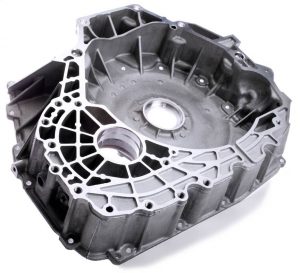Get To Know The Entire Processes of Diecastings
Die casting is a preferred production process for casting metal products. There are 2 major process types of diecastings and numerous alternatives in procedure layout. When molten metal is required into mold tooth cavities at high pressure, it is then known as die casting. The process is finest suited for rapid production of bulk metallic components that require low after-product machining.
Different Processes of Diecastings
Most die casting process kinds are created with the same target to mind - cast a mold using injected smelted metal. Depending on the type of dissolved metal, component geometry and component scaling, diverse die casting procedures could deliver superior outcomes over alternative methods. The two main kind are hot-chamber and cold-chamber. Variations on these two sorts of die casting include - low-pressure, vacuum, squeeze and semi-solid diecastings.
Hot-Chamber Method
Hot-chamber, sometimes known as "gooseneck die casting", is the more preferred of the 2 processes of diecastings. In this procedure, the canister chamber of the injection system is entirely immersed in the molten metal bath. A gooseneck metal feed program draws the molten metal into the die tooth cavity.
While direct engagement in the melted bath allows for fast and convenient mold injection, it additionally leads to increased rust susceptibility. Due to this fact, the hot-chamber procedure is finest fit for applications that take advantage of materials with reasonable melting points and high fluidity. Good metals for the hot-chamber diecastings include copper, zinc, lead and magnesium.
Cold-Chamber Procedure
The cold-chamber die casting procedure is extremely similar to the prior one. Having a layout that concentrates on lessening equipment oxidation rather than production effectiveness, the melted metal is automatically or ladled by hand into the shot system. This gets rid of the necessity for the injection system to be immersed in the melted metal bath.
For products which are too harsh for your immersion form of hot-chamber process, the cold-chamber could be an exceptional choice. These applications include the casting of metals with high melting temps, including metal and aluminum alloys.
Vacuum Procedure
Vacuum pressure casting (VPC) is a relatively brand-new die casting process that gives superior potency and very little porosity. This process resembles low-pressure die casting, apart from the places of the die cast mold and molten metal bath are corrected. The cylinder chamber could come to be a vacuum, which forces the melted metal into the mold tooth cavity. This structure decreases disturbance and limits the amount of gas inclusions. Vacuum die casting is particularly beneficial in things destined for post-casting heat therapy.
Low-Pressure Technique
Low-pressure die casting is a procedure best matched for aluminum components which are symmetric around an axis of rotation. Vehicle tires, for example, are commonly produced through low-pressure diecastings. In this sort of procedure, the mold is situated vertically on top of the molten metal bath and joined by means of a riser tube. When the chamber is being forced, the metal is pulled right up and into the mold. The removal of feeders from this kind of die casting process offers the high casting yields.
Semi-Solid Method
Semi-solid procedure, is an additional process that offers marginal porosity and optimum solidity. A device reduces the work item into smaller sized slugs, then heated up. As soon as the metal has actually gotten to the cycle transition involving strong and fluid, resulting in a rather slushy texture, a whack sleeve requires it into the mold cavity, where it hardens. The perk of this is improved accuracy. Non-ferrous metals such as magnesium alloy and aluminum alloy are most typically utilized with the semi-solid diecastings.
Squeeze Procedure
Squeeze casting was developed as a workable solution for casting metals and materials with reduced fluidity. In this particular procedure, the melted metal fills up an open die, which squeezes sealed, requiring the metal in to the recessed sections of the shaping. The squeeze casting process produces remarkably heavy items and is a complementary process to subsequent heat-treating. The procedure is most frequently connected with molten aluminum, and is used in things that require fiber reinforcement.

Comments
Post a Comment